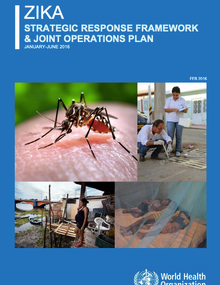Since the Zika virus was first identified in a monkey in Uganda in 1947, it has rarely caused illness in humans. When people have become infected with the virus, the disease it causes has generally been mild, with small outbreaks occurring in a relatively narrow geographical band around the equator.
The situation today is dramatically different. Last year the virus was detected in the Americas, where it is now spreading explosively. Possible links with neurological complications and birth malformations have rapidly changed the risk profile of Zika from a mild threat to one of very serious proportions.
The Zika situation is particularly serious because of the potential for further international spread, given the wide geographical distribution of the mosquito vector, the lack of population immunity in newly affected areas, and the absence of vaccines, specific treatments and rapid diagnostic tests.
WHO has activated its Emergency Operations incident management system to coordinate the international response to this outbreak. This Strategic Response and Joint Operations Plan aims to provide support to affected countries, build capacity to prevent further outbreaks and control them when they do occur, and to facilitate research that will help us better understand this virus and its effects.
|

